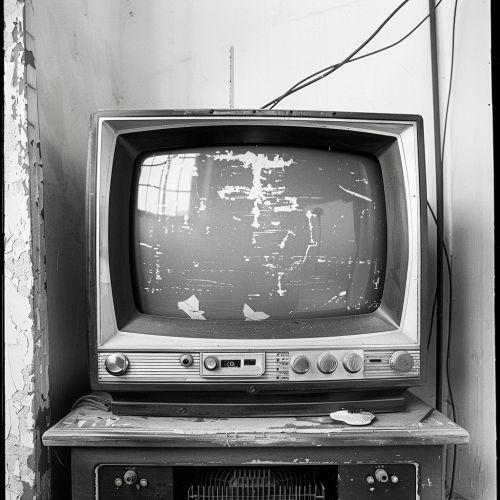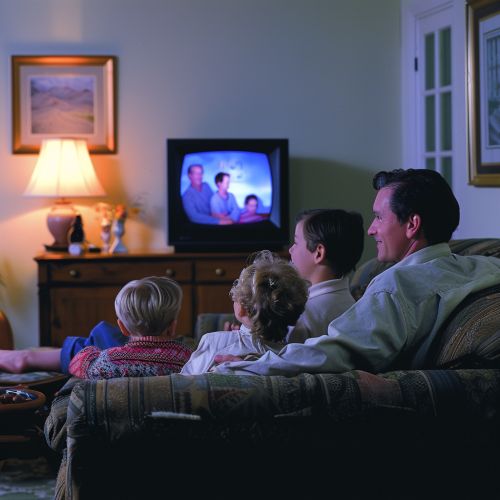Television Program
History
Television programming has a rich history that spans over several decades, beginning with the experimental broadcasts of the early 20th century. The first television broadcast was made in 1928 by General Electric's experimental station W2XB. This initial broadcast was a simple image of a dollar sign, which was chosen for its easily recognizable shape.


As technology advanced, so did the complexity and variety of television programs. The 1950s marked the beginning of the "Golden Age of Television", with shows like "I Love Lucy" and "The Twilight Zone" captivating audiences with their innovative storytelling and production techniques. This era also saw the rise of the first television networks, such as NBC and CBS, which began to produce and distribute their own programming.
The 1960s and 1970s brought about significant changes in television programming, with the introduction of color television and the expansion of programming genres. During this time, television began to reflect the social and cultural changes happening in society, with shows like "All in the Family" and "M*A*S*H" tackling serious issues such as racism and war.
In the 1980s and 1990s, cable television and satellite television expanded the number of available channels, leading to a greater diversity of programming. This period also saw the rise of reality television, with shows like "The Real World" and "Survivor" gaining popularity.
The 21st century has been marked by the rise of digital television and streaming services, which have further expanded the variety and accessibility of television programming. Shows like "Breaking Bad" and "Game of Thrones" have garnered critical acclaim and large audiences, demonstrating the continued relevance and impact of television programming in the digital age.
Types of Television Programs
There are many different types of television programs, each with its own unique characteristics and conventions. These include dramas, comedies, reality shows, news programs, documentaries, and more.


Drama
Drama is a genre of television programming that features scripted stories about fictional or historical characters and events. Dramas can be further divided into sub-genres such as crime dramas, medical dramas, and soap operas. Notable examples of drama series include "The Sopranos", "The West Wing", and "Mad Men".
Comedy
Comedy is a genre of television programming that aims to entertain and amuse the audience through humor. Comedies can range from sitcoms, which often feature a recurring cast of characters in a specific setting, to sketch comedies, which consist of short, humorous scenes or vignettes. Notable examples of comedy series include "Friends", "The Office", and "Saturday Night Live".
Reality Television
Reality television is a genre of television programming that documents unscripted situations and actual occurrences. Reality television can encompass a wide variety of formats, from competition shows like "The Amazing Race" and "American Idol", to lifestyle and documentary-style shows like "Keeping Up with the Kardashians" and "Deadliest Catch".
News Programs
News programs are a type of television programming that reports on current events and issues. They can range from local news broadcasts, which cover events in a specific geographical area, to national and international news programs like "NBC Nightly News" and "BBC World News".
Documentaries
Documentaries are a type of television programming that provides a factual report on a particular subject or event. Documentaries can cover a wide range of topics, from historical events and scientific discoveries, to cultural phenomena and personal stories. Notable examples of documentary series include "Planet Earth", "The Civil War", and "Making a Murderer".
Production
The production of a television program involves several stages, including development, pre-production, production, post-production, and distribution.


Development
The development stage involves the creation of the program's concept and the writing of the script. This stage often involves a team of writers, who work together to develop the story and characters. The script is then pitched to television networks or production companies, who decide whether or not to fund the production of the program.
Pre-production
Once a program has been greenlit, the pre-production stage begins. This involves planning and preparing for the production of the program. Tasks during this stage can include casting, location scouting, and the creation of sets and costumes.
Production
The production stage is when the actual filming of the program takes place. This involves the director, actors, and production crew working together to film the scenes as outlined in the script. The production stage can take anywhere from a few weeks to several months, depending on the complexity of the program.
Post-production
After filming is complete, the post-production stage begins. This involves editing the filmed footage, adding special effects, and creating the final sound mix. The post-production stage is crucial in shaping the final product, as it allows for the correction of any mistakes or issues that occurred during filming.
Distribution
Once the program has been completed, it is ready for distribution. This involves broadcasting the program on television, or making it available for streaming online. The distribution stage also involves marketing the program to attract viewers.
Impact and Influence
Television programming has a significant impact on society and culture. It has the ability to inform, entertain, and influence the attitudes and behaviors of viewers. Television programs can also reflect and shape societal norms and values, and can serve as a platform for discussing important issues and events.


Television programming can also have economic impacts, both through the creation of jobs in the television industry, and through the advertising revenue generated by television networks and stations.
In addition, television programming can have educational impacts, with programs like "Sesame Street" and "Bill Nye the Science Guy" providing educational content for children and adults alike.
